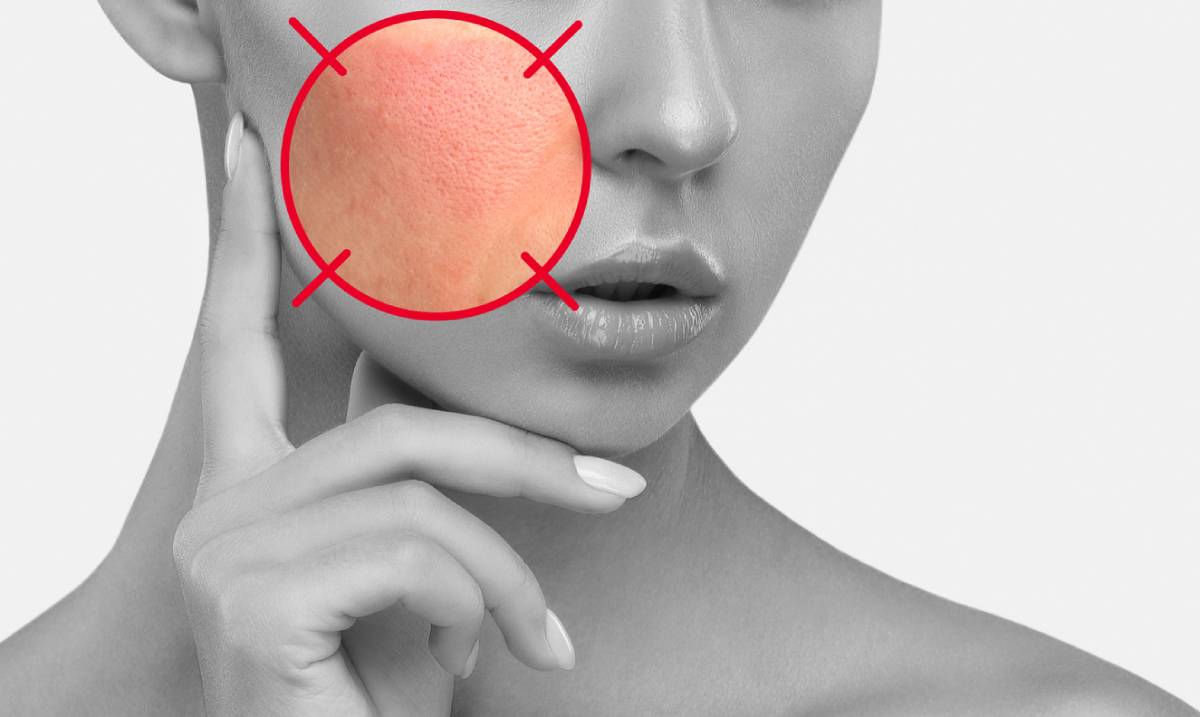Rosacea is a common skin condition that impacts roughly 14 million Americans. It most commonly impacts women and those with fair skin. The condition is characterized by persistent redness and inflammation. It can also cause visible blood vessels and bumps. While the condition is not often life-threatening, rosacea can impact your daily life as it can cause discomfort. If you suffer from the condition, you may wonder, what are the most common rosacea triggers (and how can you avoid them)? Below, you will find helpful information on managing the condition and treating rosacea.
What Are the Most Common Rosacea Triggers (and How Can You Avoid Them)?
Rosacea is a skin condition characterized by visible redness and dilated blood vessels. It can also cause bumps, pimples, and eye irritation. The visible symptoms can cause embarrassment and impact one’s self-esteem. Because of the impact rosacea can have on one’s daily life, it is important to understand common triggers.

Heat
Heat dilates the blood vessels and causes them to expand. This results in flushing and increased redness. This can happen if you are in warm weather, taking a hot shower, cooking, or even using hot tools on your hair. Individuals with rosacea may experience a flare-up, even with minor overheating. Maintaining one’s internal body temperature can reduce symptoms.
To minimize the impact of rosacea triggered by heat, avoid exposure to heat whenever possible. This includes taking lukewarm showers instead of hot ones. Use a fan or air conditioner when you are in the bathroom, using hot tools on your hair, or immediately after showering. It is best to avoid warm environments, such as saunas and hot tubs, as they can cause overheating. Another important step is to stay hydrated, as this can help regulate your internal body temperature.
Sun Exposure
Sunlight is a very common trigger for rosacea. Sun exposure can cause inflammation and damage the skin barrier. This results in persistent redness. Those with rosacea are more sensitive to sunlight and can be impacted even after brief exposure. This can make outdoor activities more challenging. However, it is not impossible to spend time outdoors with rosacea if you take the right precautions.
If you plan on going outdoors and have rosacea, avoid the sun during peak hours. The middle of the day is when the UV rays are the strongest. If you do go outdoors, wear protective clothing, a wide-brimmed hat, and sunglasses to protect yourself from the sun. Additionally, wear sunscreen with at least SPF 30 on a daily basis. Protecting your skin when going outdoors can reduce the risk of flare-ups.
Spicy Foods
Spicy foods are delicious, but they can have a negative impact on individuals with rosacea. Spicy ingredients stimulate nerve endings and increase circulation. This can trigger redness in individuals with rosacea, particularly around the face and neck. For those who are adventurous with their food, this can be a significant issue.
Due to the impact that spicy foods can have on individuals with rosacea, it is best to avoid them altogether. If you do not want to give up spicy foods entirely, start a diet diary. You can track what foods you eat and if you have a reaction. While most spices can trigger a reaction in those with rosacea, there may be some exceptions. While you are determining what impacts you and what does not, experiment with new herbs to ensure your food is tasty.
Rosacea Treatment
Several treatment options are available to address rosacea. It is important to work with a reputable medical spa to address your skin concerns. Below are some of the most effective treatment options.
Laser Skin Resurfacing
Laser Skin resurfacing is effective in addressing rosacea. It uses focused light to remove the outer layers of the skin. This removes damaged skin cells and targets visible blood vessels. It also promotes collagen production and reduces redness. Patients with advanced rosacea benefit from this treatment option.
Chemical Peels
Chemical peels are effective in addressing the signs of rosacea. Common results reduce redness, inflammation, and breakouts. The treatment also addresses skin texture and unclogs pores. The treatment exfoliates the top layer of the skin to reveal newer and healthier skin. Gentle formulas are best suited for individuals with rosacea to minimize the risk of a flare-up.
Microneedling
Microneedling is an effective treatment for reducing rosacea-related inflammation. The treatment involves controlled micro-injuries to the skin. This stimulates collagen production and healing. It is effective in strengthening the skin barrier and leaves the skin smooth. Patients also report an improvement in their skin texture and a reduction in broken blood vessels.
Medical Spa
If you have rosacea, contact the team at Cloud Med Beverly Hills today to schedule an appointment!

